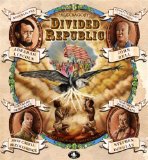States electoral votes map

A nominee needs a majority of the electoral votes to win the presidency. You'll notice, on election night, that the TV commentators keep track of the states each nominee wins. They add up the number of electoral votes that each state win represents. The race is over as soon as one of the nominees gets one more than half, or 270, of the total of electoral votes.
By the end of election night or early the next morning, the nation usually knows the winner of the election. The president is not officially elected until the members of the Electoral College cast their state's votes in December, however, and Congress counts those votes on January 6.
There were just 13 states and only 69 electoral votes when George Washington was elected. Our nation has grown a lot since then. Today there are 538 electoral votes, but the number of electoral votes for each state is still determined the way it was in Washington's day. The Constitution allows each state to have as many electoral votes as it has representatives in Congress. The size of the state's population is the basis for the number of representatives. No state has fewer than three electoral votes. This is because each state has two senators and at least one representative in the House of Representatives.
At the beginning of every decade, every ten years, the government takes a census to determine the population of each state. It might lose electoral votes if a state's population has decreased. It may receive more electoral votes than it previously had if a state's population has increased. The most recent electoral map was drawn up after the 2000 census.
Many have criticized the Electoral College system over the years. Although some attempts to change it have been successful, two important criticisms still remain unanswered. First, there is no guarantee that an elector who is pledged to vote for a certain candidate will actually do so. Only a few electors have switched their vote, and none changed the outcome of an election. The winner-take-all system is the second criticism. By getting just one more popular vote that the opponent, a nominee can get all of a state's electoral votes. As a result, three nominees have been elected president even though their opponents received more popular votes nationally.
You might also like



|
Remarks of Mr. Commissioner A. in the consultations of the electroal commission, upon the electoral votes of Florida, Louisiana, Oregon, and South Carolina Book ([Gov. Print. Off.]) |

|
Divided Republic Toy (Numbskull Games)
|




|
STROM THURMOND - PHOTOGRAPH SIGNED Entertainment Memorabilia
|

|
STROM THURMOND - TYPED LETTER SIGNED 03/10/1981 Entertainment Memorabilia
|

|
PRESIDENT MARTIN VAN BUREN - AUTOGRAPH LETTER SIGNED 05/05/1858 Entertainment Memorabilia
|






